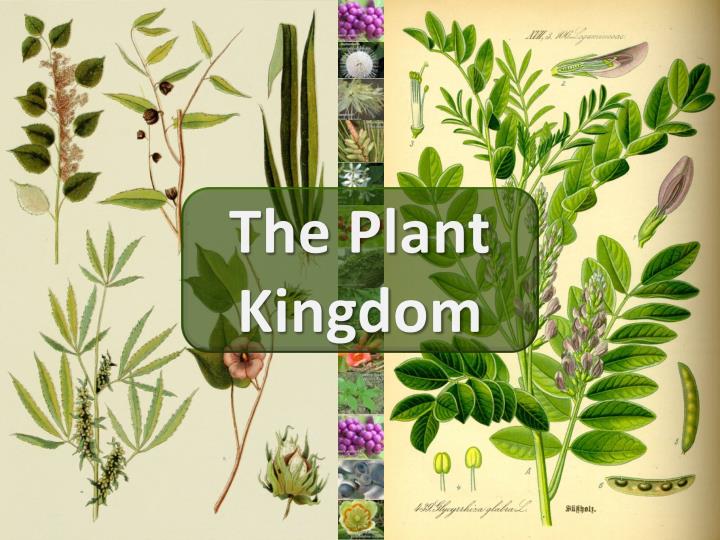DOWNLOAD MOBILE APPLICATION TO LEARN MORE: PLANT KINGDOM NEET QUESTIONS

Kingdom Plantae includes all the plants. They are eukaryotic, multicellular and autotrophic organisms. The plant cell contains a rigid cell wall. Plants have chloroplast and chlorophyll pigment, which is required for photosynthesis.
Characteristics of Kindom Plantae
The plant kingdom has the following characteristic features:
- They are non-motile.
- They make their own food hence are called autotrophs.
- They reproduce asexually by vegetative propagation or sexually.
- These are multicellular eukaryotes. The plant cell contains the outer cell wall and a large central vacuole.
- Plants contain photosynthetic pigments called chlorophyll present in the plastids.
- They have different organelles for anchorage, reproduction, support and photosynthesis.
Classification of Kingdom Plantae
A plant kingdom is further classified into subgroups. Classification is based on the following criteria:
- Plant body: Presence or absence of a well-differentiated plant body. E.g. Root, Stem and Leaves.
- Vascular system: Presence or absence of a vascular system for the transportation of water and other substances. E.g. Phloem and Xylem.
- Seed formation: Presence or absence of flowers and seeds and if the seeds are naked or enclosed in a fruit.
More to Read: Seed And Fruit Formation – Seed Dispersal
The plant kingdom has been classified into five subgroups according to the above-mentioned criteria:
- Thallophyta
- Bryophyta
- Pteridophyta
- Gymnosperms
- Angiosperms
Table of Contents
Thallophyta
Thallophytes lack a well-differentiated body structure and the plant body is thallus li
Thallophyta includes plants with primitive and simple body structure. The plant body is thallus, they may be filamentous, colonial, branched or unbranched. Examples include green algae, red algae and brown algae. Common examples are Volvox, Fucus, Spirogyra, Chara, Polysiphonia, Ulothrix, etc.
PLANT KINGDOM NEET QUESTIONS
Bryophyta
Bryophytes do not have vascular tissues. The plant body has root-like, stem-like and leaf-like structures. Bryophytes are terrestrial plants but known as “amphibians of the plant kingdom” as they require water for sexual reproduction. They are present in moist and shady places. Bryophyta includes mosses, hornworts and liverworts. Some of the common examples are Marchantia, Funaria, Sphagnum, Antheoceros, etc.
Pteridophyta
Pteridophytes have a well-differentiated plant body into root, stem and leaves. They have a vascular system for conduction of water and other substances. Some of the common examples are Selaginella, Equisetum, Pteris, etc.
Gymnosperms
Gymnosperms have a well-differentiated plant body and vascular tissues. They bear naked seeds, i.e. seeds are not enclosed within a fruit. Some of the common examples of gymnosperms are Cycas, Pinus, Ephedra, etc.
Angiosperms
Angiosperms are seed-bearing vascular plants with a well-differentiated plant body. The seeds of angiosperms are enclosed within the fruits. Angiosperms are widely distributed and vary greatly in size, e.g. Wolffia is small measuring about 0.1 cm and Eucalyptus trees are around 100 m tall. Angiosperms are further divided into monocotyledons and dicotyledons according to the number of cotyledons present in the seeds. Some of the common examples are mango, rose, tomato, onion, wheat, maize, etc.
PLANT KINGDOM NEET QUESTIONS
1. Cyanobacteria are classified under
(a) Protista (b) Plantae
(c) Monera (d) Algae
Answer: C
2. Fusion of two motile gametes which are dissimilar in size is termed as
(a) Oogamy (b) Isogamy
(c) Anisogamy (d) Zoogamy
Answer: C
3. Holdfast, stipe and frond constitutes the plant body in case of
(a) Rhodophyceae (b) Chlorophyceae
(c) Phaeophyceae (d) All of the above
Answer: C
4. A plant shows thallus level of organization. It shows rhizoids and is haploid. It needs water to complete its life cycle because the male gametes are motile. Identify the group to which it belong to
(a) Pteridophytes (b) Gymnosperms
(c) Monocots (d) Bryophytes
Answer: D
5. A prothallus is
(a) A structure in pteridophytes formed before the thallus develops.
(b) A sporophytic free living structure formed in pteridophytes.
(c) A gametophytic free living structure formed in pteridophytes.
(d) A primitive structure formed after fertilization in pteridophytes.
Answer: C
ALSO VISIT :Photosynthesis in Higher Plants NEET QUESTIONS
DOWNLOAD MOBILE APPLICATION TO LEARN MORE: PLANT KINGDOM NEET QUESTIONS

